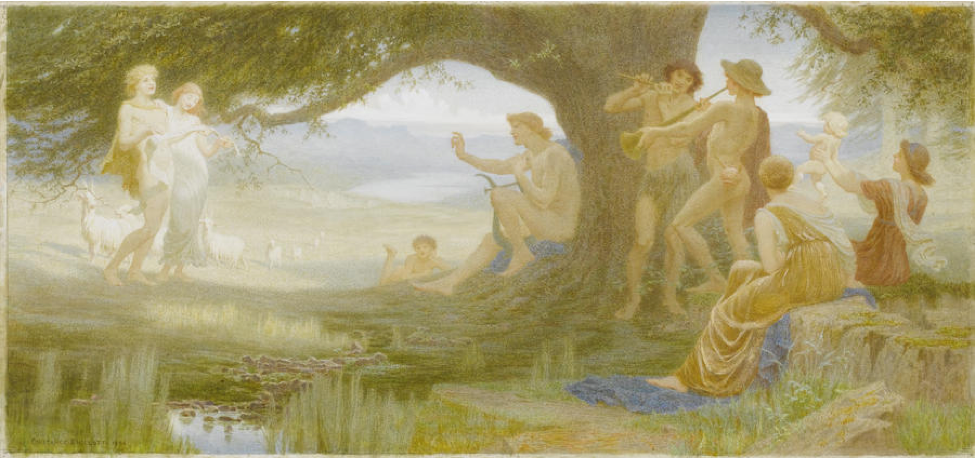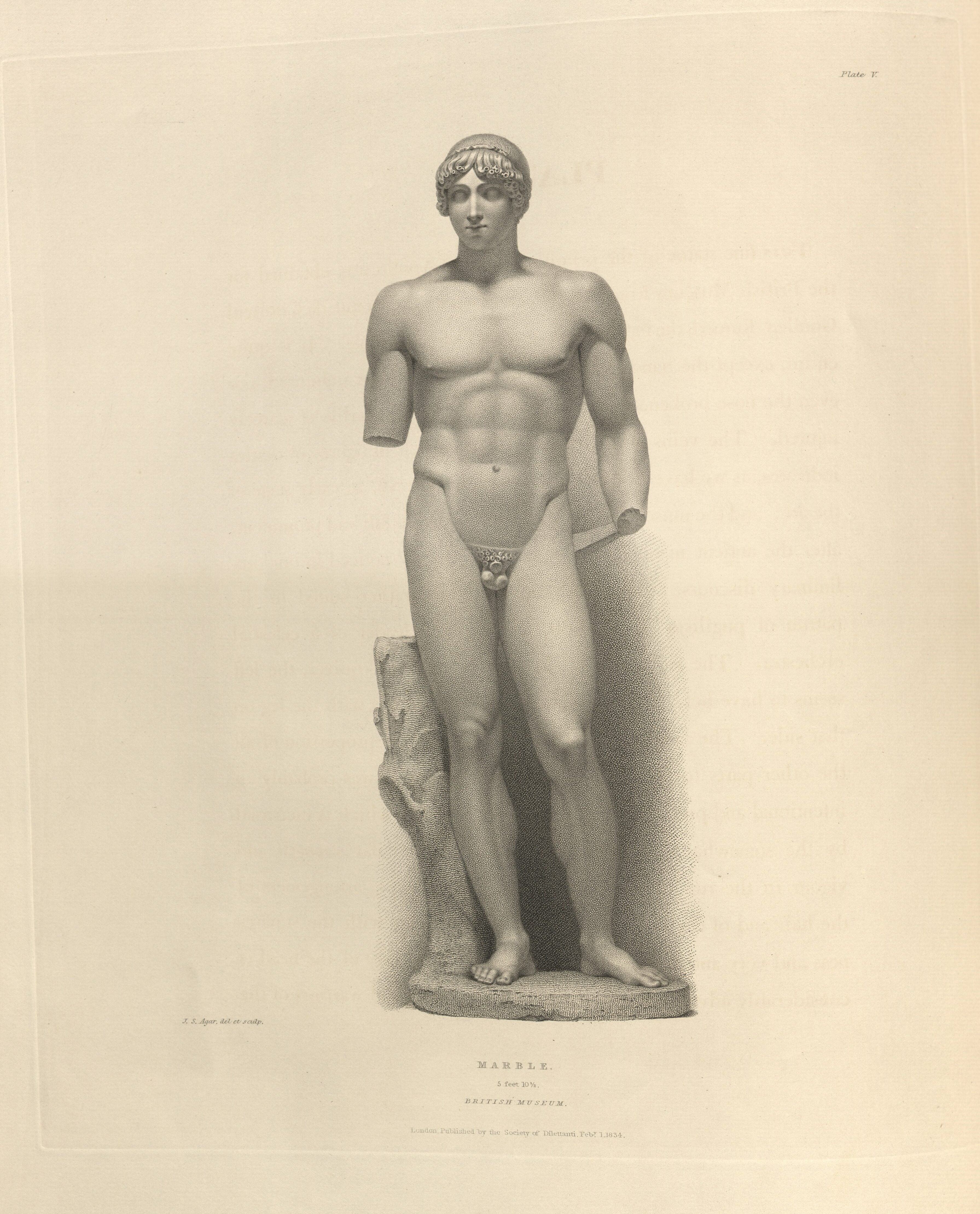John Addington Symonds was exposed to classical Greco-Roman art through the large illustrated folios in the library in his childhood home in Clifton. In his Memoirs, Symonds recalls that his house “was well stocked with engravings, photographs, copies of Italian pictures, and illustrated works upon Greek sculpture.” (118). From this large collection, Symonds mentions that “the two large folios issued by the Dilettante Society were among my favorites” (ibid). The Dilletante Society that Symonds refers to, more properly known as the Society of Dilettanti, was an academic society that focused on studying ancient Greek and Roman art.
One of these folios is most likely Specimens of Ancient Sculpture, Ægyptian, Estruscan, Greek, and Roman: Selected from Different Collections in Great Britain published by the Society of Dilettanti published in 1809. Specimens is filled with engravings that reproduce pieces of sculpture obtained by the British Museum from private donors of ancient Greek sculptures, including the figure of Apollo, whose representations in art and literature became an inspiration for Symonds throughout his life. Symonds describes the attraction as follows:
“The kernel of my inspiration was that radiant figure of the young Apollo, doomed to pass his time with shepherds, serving them, and loving them. A luminous haze of yearning emotion surrounded the god. His divine beauty penetrated my soul and marrow”
(114)
These descriptions of Apollo come from the mythological story of Apollo’s servitude to King Admetus as punishment for rebelling against Zeus (Apollodorus, The Library): “So he went to Admetus, son of Pheres, at Pherae, and served him as a herdsman, and caused all the cows to drop twins” (Apollodorus). This description of Apollo is one that sets the deity in a pastoral landscape, with the god interacting with nature and potential lovers of both genders. The erotic implications of such a setting are well illustrated in “The Herdsmen of Admetus” painted by Constance Phillott.

Symonds’ understanding of Apollonian beauty was not just one based on literary understanding of the mythological figure, but also on visual representations which portray the figure of Apollo. In Plate V of the Specimens, the figure of Apollo is depicted; as the description notes:
“The muscles of the limbs and body are full and prominent after the antient manner of representation”
(Society of Dilettanti)
In this depiction of the god, he seems to be engaging in something related to nature, like hunting. According to the text in the book, “the right arm might have rested on a quiver, the left seems to have held a bow, which has been in contact with the leg on the left side.” (Society of Dilettanti).
In the corner of the plate, is the inscription “J.S. Agar”, referring to John Samuel Agar, a painter and engraver in the early nineteenth century, close to the publication date of this book. Unlike John Flaxman, another engraver of the time, Agar utilizes a style of engraving depicts Apollo’s full form in a realistic style. This depiction of Apollo, with its sharp details, displays his physicality, not his intellect or his association with the arts, comparable more to “patron of pugilism than to the leader of a celestial orchestra” (Society of Dilettanti).
Symonds equates Apollo with masculinity and his association with nature, such as the legends of Apollo’s travels among shepherds. For Symonds, “the god of my adoration drank life and love among the sheep-cotes of Admetus” (Memoirs, 114). Symonds understands Apollo as both an abstracted deity of the arts, but also as a representation of ideal male beauty. This view of Apollo is one that depicts idealized beauty which Symonds uses to judge what he perceives in others.

Symonds’s view of art also influenced his view of real life. When he describes his relationship with William Dyer, Symonds describes his friend as: “the boy who owned that voice seemed the only beautiful, the only flawless being I had ever seen” (Memoirs, 155). This description of Dyer reflects the view that Symonds holds in his mind about ideal beauty, which he contrasts to the social relationships that prevailed at Harrow.
He writes that Dyer “had delivered my soul from the Egyptian house of Harrow bondage. He enabled me to realize an ideal of a passionate and yet pure love between friend and friend” (Memoirs, 158). This use of the “ideal” clearly manifests itself in the way that Symonds translates his love for William into the classical framework.
Works Cited:
Apollodorus. Apollodorus, The Library, with an English Translation by Sir James George Frazer, F.B.A., F.R.S. in 2 Volumes. Cambridge, MA, Harvard University Press; London, William Heinemann Ltd. 1921. http://www.perseus.tufts.edu/hopper/text?doc=Apollod.%203.10.4&lang=original
Specimens of Antient Sculpture, Ægyptian, Etruscan, Greek and Roman: Selected From Different Collection In Great Britain. London: Printed by T. Bensley for T. Payne, and J. White and co., 1809. https://catalyst.library.jhu.edu/catalog/bib_719409
Symonds, John Addington. Regis, Amber K. The Memoirs of John Addington Symonds: A Critical Edition. London: Palgrave Macmillan UK, 2016.

